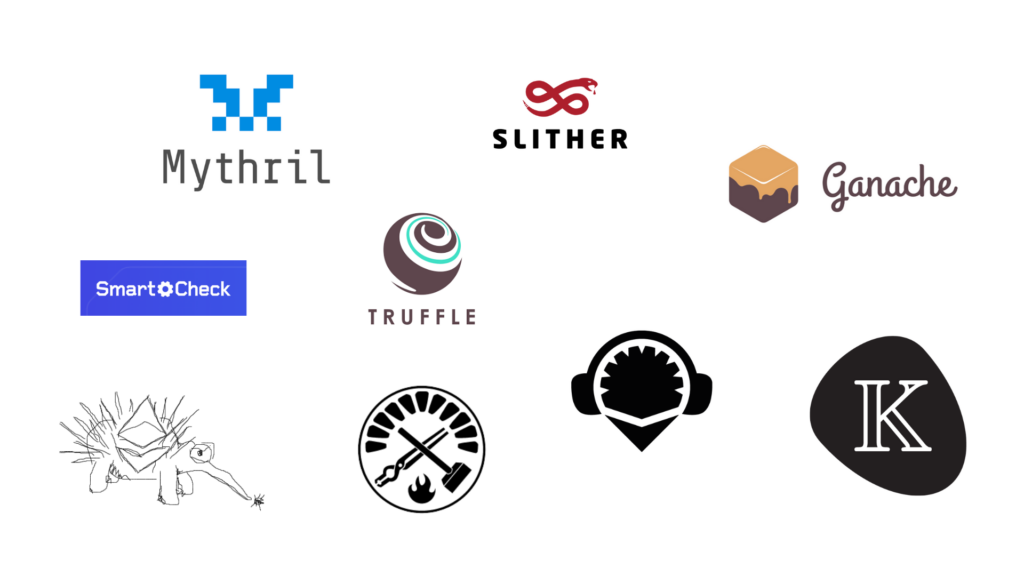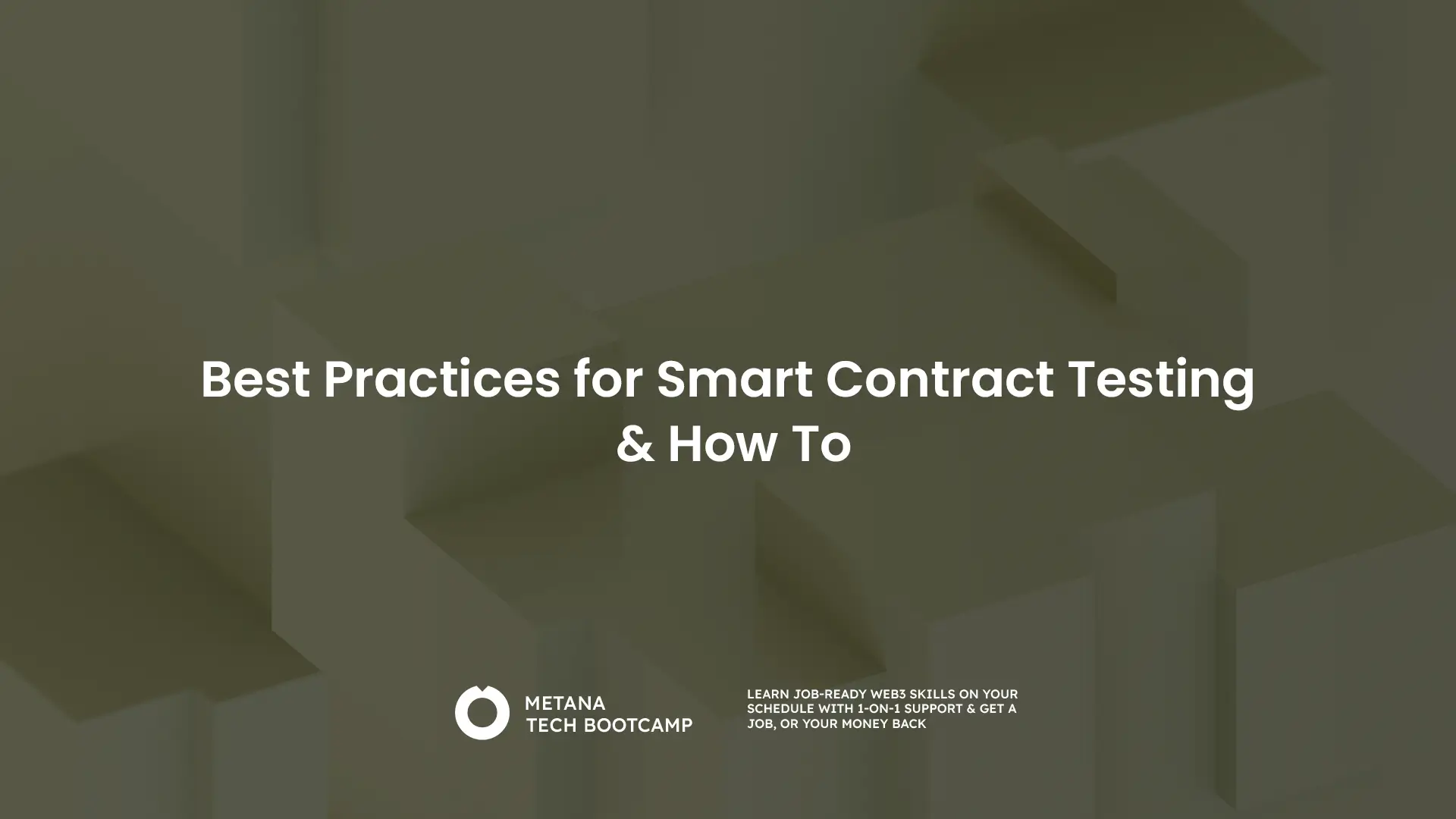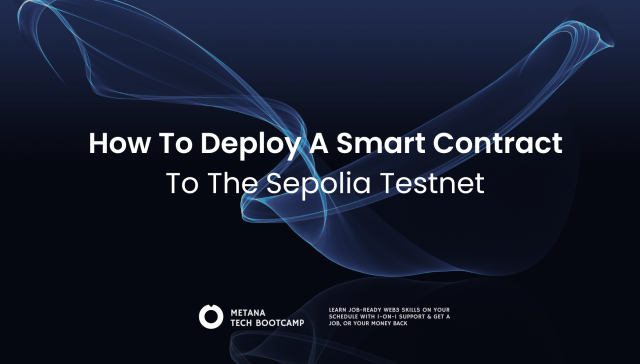Smart contracts, the self-executing code on blockchains, have revolutionized various industries. From decentralized finance (DeFi) to supply chain management, their potential is undeniable. However, with great power comes great responsibility. Since smart contracts operate immutably on a blockchain, any bugs or vulnerabilities can lead to catastrophic financial losses. This is where thorough smart contract testing becomes paramount. Understanding how to test a smart contract is crucial in this context, as it ensures the development of secure and reliable smart contracts.
This article delves into the best practices for smart contract testing, equipping you with the knowledge and strategies to build secure and reliable smart contracts.

Why is Smart Contract Testing Crucial?
Imagine a vending machine dispensing products without proper payment verification. That’s the potential danger lurking in untested smart contracts. Here’s why testing is critical,
- Security Vulnerabilities: Smart contracts are susceptible to various attacks like reentrancy attacks, integer overflows, and denial-of-service (DoS) attacks. Testing helps identify and eliminate these vulnerabilities before deployment.
- Unintended Behavior: Even with the best intentions, coding errors can lead to unintended behavior. Testing helps uncover these errors and ensures the contract functions as intended.
- Edge Cases: Real-world scenarios often involve unexpected situations. Testing helps simulate these edge cases and identify potential issues before they arise in a live environment.
- Increased Confidence: Rigorous testing fosters confidence in the smart contract’s functionality and security. This is crucial for attracting users and investors.

Core Principles of Smart Contract Testing
Effective smart contract testing adheres to several core principles,
- Shift Left Testing: Integrate testing as early as possible in the development lifecycle. This allows for early detection and resolution of bugs.
- Multiple Testing Approaches: Employ a combination of manual and automated testing techniques for comprehensive coverage.
- Security-First Mindset: Prioritize security throughout the testing process, focusing on identifying and mitigating potential vulnerabilities.
- Clear Documentation: Document test cases, expected results, and identified issues for future reference and maintenance.
- Continuous Integration/Continuous Delivery (CI/CD): Automate testing as part of the CI/CD pipeline to ensure consistent quality throughout development.
A Comprehensive Testing Approach: Techniques and Tools
Building a secure smart contract is akin to constructing a fortress – a single weak point can render the entire structure vulnerable. To ensure the robustness of your smart contract, a multi-layered testing approach is essential. This involves employing a diverse set of techniques, each with its own strengths, to identify and eliminate potential weaknesses. Let’s delve into these vital testing techniques:
- Static Analysis: Think of this as an automated code review to identify potential issues early in development. Tools like Mythril and Slither can help uncover vulnerabilities before deployment.
- Unit Testing: Break down your contract into its functions and test each one rigorously to ensure they work as expected. Frameworks like Truffle and Foundry provide built-in unit testing functionalities.
- Integration Testing: Simulate how your contract interacts with other parts of the system like APIs or other contracts. Tools like Remix and Ganache allow you to create a controlled environment for testing these interactions.
- Fuzz Testing: Throw unexpected data at your contract – nonsensical inputs, extreme values – to uncover edge cases and vulnerabilities that traditional testing might miss. Tools like Echidna can be adapted for this purpose.
- Formal Verification: For the most secure contracts, use mathematical proofs to formally verify the logic. This requires expertise in formal logic but offers the highest level of security. Tools like Z3 can be used for this approach.

Here’s a breakdown of how these techniques can be applied to different stages of the development process,
- Early Development: Static analysis can be used during initial coding to identify potential issues.
- Unit Testing: As development progresses, unit tests can be written to verify individual functions.
- Integration Testing: Later stages involve testing interactions with external components.
- Pre-Deployment: Fuzz testing and formal verification can be employed for a final layer of security checks.
Additional Considerations for Robust Testing
While core testing techniques like static analysis, unit testing, and integration testing form the foundation of a secure smart contract, achieving bulletproof security demands a more comprehensive approach. Here, we delve into additional considerations that elevate your testing strategy and empower you to build fortress-like smart contracts, resilient against even the most sophisticated attacks,
- Threat Modeling: Imagine a bank vault – no matter how strong the locks, a thief with knowledge of its vulnerabilities can still exploit them. Similarly, smart contracts, despite rigorous coding, can be susceptible to various attack vectors if not carefully considered.
- Gas Optimization: Blockchain transactions are fueled by gas, a unit that measures the computational effort required to execute a smart contract’s operations. High gas fees can significantly impact user adoption – imagine having to pay a hefty sum just to make a simple purchase.
- Code Coverage: Testing is all about achieving the greatest possible assurance, and one way to measure this assurance is through code coverage. Code coverage refers to the percentage of your smart contract’s code that is exercised by your test cases.
- Test Environment Setup: Just as a pilot wouldn’t attempt a maiden voyage without a flight simulator, thorough smart contract testing necessitates a robust testing environment. This environment should closely mirror the real-world scenario in which your smart contract will operate.
Best Practices for Manual Testing
While automation plays a crucial role, manual testing remains essential,
- Reviewing Code: Manually review the code for logical errors, security vulnerabilities, and adherence to best practices.
- Testing Expected Behavior: Manually execute various functionalities of the smart contract and verify they operate as intended under different scenarios.
Conclusion
Building secure smart contracts is paramount in the blockchain world. By adhering to the best practices and employing a multi-layered testing approach outlined in this article, you can significantly reduce the risk of vulnerabilities and ensure the reliability of your smart contracts. Remember, a robust testing strategy is not just about identifying bugs – it’s about fostering confidence in your smart contract’s ability to function as intended, even in unforeseen circumstances.

FAQs
What are smart contracts and why is testing them important?
- Smart contracts are self-executing contracts with the terms directly written into code. Testing is crucial to ensure they operate correctly and securely, as flaws can lead to significant financial loss or data breaches.
What are the key best practices for smart contract testing?
- Key practices include thorough unit testing, integration testing, using testing frameworks specific to smart contracts, and simulating real-world scenarios to identify potential vulnerabilities.
How can simulation help in smart contract testing?
- Simulation helps by creating virtual environments to test smart contracts under various conditions, enabling developers to foresee and mitigate potential issues in a controlled setting.
What tools are essential for effective smart contract testing?
- Essential tools include Truffle, Hardhat, and Ganache, which provide frameworks and environments for testing and deploying smart contracts on blockchain networks.
How do you ensure the security of a smart contract during testing?
- Ensuring security involves conducting vulnerability scans, peer reviews, and employing security-focused testing methods to uncover and fix security gaps.
What is blockchain and its relation to smart contracts?
- Blockchain is a distributed ledger technology where transactions are recorded chronologically and publicly. Smart contracts are applications that run on a blockchain, automating contract execution.
How do you stay updated with the latest smart contract testing strategies?
- Stay updated by following industry leaders on social media, participating in blockchain forums, attending webinars, and subscribing to relevant newsletters.
What is the role of peer reviews in smart contract development?
- Peer reviews in smart contract development involve having other developers examine the code to identify potential issues, improving code quality and security.
How does integration testing differ from unit testing in smart contract development?
- Unit testing involves testing individual functions or components, while integration testing checks the interactions between different parts of the smart contract to ensure they work together seamlessly.
Why is continuous learning important for developers working with smart contracts?
- Continuous learning is vital due to the rapidly evolving nature of blockchain technology, ensuring developers stay informed about new tools, practices, and potential vulnerabilities.





